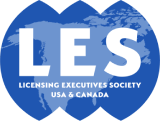The Medicines Patent Pool (MPP) was created with funding from Unitaid and is an organization that oversees licensing of medicines and health technologies with the aim of increasing access to and facilitating development of medicines—including HIV, hepatitis C, tuberculosis and COVID-19 treatments—for people living in low-and middle-income countries (LMICs). MPP’s purpose is to sublicense the medicines and health technologies as a public health measure in order to accomplish the aims of Unitaid. The mission of the National Institutes of Health (NIH) is in alignment with MPP’s goal of serving as a public health measure. The NIH is a federal agency within the U.S. Department of Health and Human Services (DHHS) and is America’s premier health agency with a mission to “seek fundamental knowledge about the nature and behavior of living systems and the application of that knowledge to enhance health, lengthen life, and reduce illness and disability.” As such, the NIH has licensed MPP to help provide health countermeasures that improve lives globally including those living in LMICs. The first NIH-MPP license dates back to 2010 when MPP was founded.1 This article will describe the structure and mechanism of these MPP licenses, including their impact or outcome. Finally, the article will provide a suggestion and concluding remarks.
Merriam-Webster’s Dictionary defines “pool,” the verb, as “to combine (things, such as resources) in a common pool or effort.” Indeed, it is this pooling of technologies in MPP licenses that is both unique and beneficial to LMICs. The NIH grants MPP a non-exclusive right to grant sublicenses under the licensed patent rights and licensed materials in the licensed field of use within the licensed territory (LMICs). These sublicenses are subject to the written approval of the NIH and must include a Commercial Development Plan (CDP). However, they are approved on a non-discriminatory basis by qualified entities to enable the production and development of medicines.
The HIV/AIDS global epidemic is what spurred the first MPP licenses for products needed for the treatment and prevention of HIV/AIDS, including adapted formulations and fixed-dose combinations, for use in developing countries. The licensors of the Pool would be compensated through royalties. Reasonable rates of remuneration that considered different countries’ ability to pay, disease burden, and other relevant factors, were considered to expand the benefits of the licenses to as many LMICs as possible. The licenses included quality assurance provisions leveraging existing mechanisms (e.g., World Health Organization Prequalification Program, United States Food and Drug Administration tentative approval and European Medicines Agency). Importantly, the Pool is operated in a global, and non-exclusive manner, in recognition of the critical nature of the public health issues at stake and the widespread public interest in its work. Thus, the terms and conditions of the licenses are transparent and made public. Also, the importance of the CDP cannot be emphasized enough in that without this, there cannot be a sublicense. These licenses are meant to incentivize pharma and biotech to make their medicines accessible in LDICs and as such they need to show that they plan to develop the technologies for public use and benefit, by demonstrating commitment, ability, and readiness to use the sublicense.
MPP secured several license agreements for the Pool including technologies aimed at HIV/AIDS along with Gilead Sciences, the first agreement the Pool had made with a pharmaceutical company patent holder. Around the same time in July 2011, the Pool signed with its first generic company sublicensee, with MedChem, a new player in the HIV field at that time. This was important because attracting generic producers would help increase production capacity. Subsequently, the Pool signed with a number of other key generics manufacturers. Additionally, a joint venture (Viiv Healthcare) between GlaxoSmithKline, Pfizer, and Shionogi was formed to facilitate greater availability of critically needed medicines by MPP for children living with HIV. Thus, the MPP did accomplish what it set out to do—it attracted Pharma and generics to uptake these technologies and deploy them in an attempt to combat the deadly HIV/AIDS pandemic. The unique license structure certainly attracted and incentivized these partners to utilize the licensed technologies for the public benefit.
In the wake of the SARS-CoV-2 pandemic in 2020, the WHO utilized the MPP initiative to create the COVID-19 Technology Access Pool (C-TAP). The C-TAP called on institutions globally to make their COVID-19 patents and technologies available through MPP in the fight against this deadly pandemic. C-TAP aims to boost the global supply of vaccines, treatments, and diagnostics for COVID-19 specifically by facilitating the sharing of intellectual property, knowledge, and data with quality-assured manufacturers that have the capacity to scale up production. MPP handles the licensing of patents through C-TAP.
In response to the C-TAP call for technologies, the NIH canvassed its IP portfolio and identified and licensed 11 technologies and research tools, from the NIH intramural research program2, that fit the initiative. President Biden announced these licenses on May 12, 2022, at the second Global COVID-19 Summit, cohosted by the United States, Belize, Germany, Indonesia and Senegal. The technologies include the stabilized spike protein used in currently available COVID-19 vaccines, research tools for vaccine, drug, and diagnostic development as well as early-stage vaccine candidates and diagnostics, all of which require further commercial development. NIH scientists regularly make discoveries—both patented and unpatented—that can be transferred to the private sector for further research and development and eventual commercialization. While NIH had already granted nonexclusive licenses to companies for use of the SARS-CoV-2 stabilized spike protein as part of vaccines already approved by the US FDA, making this and other technologies available through C-TAP will facilitate even wider access.
One of the licensed tools includes the library of llama nanobodies which have shown COVID-19 neutralizing capabilities. It’s an example of being one early-stage piece in the puzzle toward eradicating the pandemic. This and the other technologies in the bundle are but components in the development process. They alone do not enable the full development of countermeasures, but they are contributions that provide an important step toward facilitating the wider availability of lifesaving interventions around the world. This new C-TAP license is expected to boost the global supply of vaccines, treatments, and diagnostics for COVID-19 by facilitating the sharing of intellectual property, knowledge, and data with quality-assured manufacturers that have the capacity to scale up production. The true focus of the new agreement is public health for the NIH licenses to MPP for inclusion in C-TAP, in most circumstances, NIH will not collect royalties on sales of products licensed in 49 countries classified by the United Nations as Least Developed Countries (LDCs).
While the MPP licenses are not a vehicle for major financial returns, they are important because both MPP and NIH share key public health goals. The Licensing Executives Society (LES) has recognized these licenses as distinct, particularly for the Industry-University-Government-Interface (IUGI) sector.3 They may serve as a model mechanism for other patent holders to disseminate their technologies as well, especially when there is a fit with their IP and the call to action, as in the HIV/AIDS and the COVID-19 pandemic. Non-traditional partners are a salient channel for technology to be accessed worldwide, including in developing countries. The ability to “partner” with various entities through this unique licensing mechanism builds better health security worldwide through greater global access to essential medicines, especially during health emergencies.
- In fact, the NIH became the first entity in 2010 to license its patent, related to the HIV medicine darunavir, to MPP through a non-exclusive agreement.
- National Institute of Allergy and Infectious Diseases (NIAID), National Cancer Institute (NCI), National Center for Advancing Translational Sciences (NCATS), National Institute of Environmental Health Sciences (NIEHS), and the National Eye Institute (NEI).
- The NIH, University of Illinois at Chicago (UIC), Gilead Sciences (Gilead), and MPP received the 2012 LES Deals of Distinction™ Award in the IUGI sector for the licensing of drugs against HIV/AIDS, Malaria, and Tuberculosis. NIH, MPP, and WHO received that same distinction from LES in October 2022, in the IUGI for the C-TAP
Authors:

NCATS/NIH,
Sr. Technology Transfer and Patenting Specialist

NIH
Special Advisor, NIH Office of Technology Transfer

NIH
Special Advisor for Technology Transfer,
Office of Science Policy

